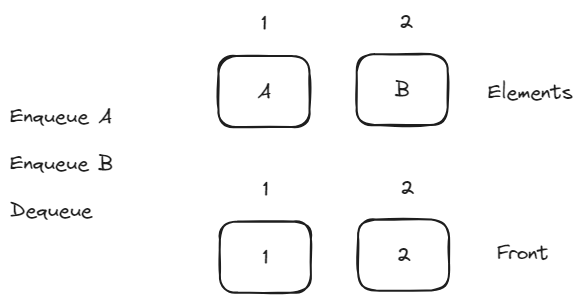In the previous post we saw how we can implement a stack on a hypercore. In this post I explore how to implement a queue which turned out to be in some ways, more complex than a stack and also simpler.
Take 1
Enqueue and dequeue
Enqeue adds a new element to the back of the queue which we can do by appending a new block to the hypercore.
To perform a dequeue we need to find the front of the queue, which is the first block, before we have done any dequeue operation. But the front keeps increasing as we perform more dequeues. So to find the front in O(1) time, we add a pointer to it along with the new element during the append.
To record the new position during dequeue, we append a special block with just the pointer to the front. Do distinguish the dequeue block, we show X where the element used to be for an enqueue block.
You can see the hypercore state after 2 enqueues and a dequeue below.

Series of dequeues
This system looks good till now, but is still not O(1) for the dequeue operation as the blocks recording the dequeue states need to be skipped to find the new front. This can be seen below where in step 7, when we do the dequeue operation, we need to skip blocks 5 and 6 before we find the new front, which is 7, and record it.

Take 2
A simple solution for avoiding the clutter of the front pointers is to store it in a different hypercore than where the elements of the queue is stored. This is shown below

We update the front of the hypercoreo only in case of a dequeue operation.
Now that is simple!